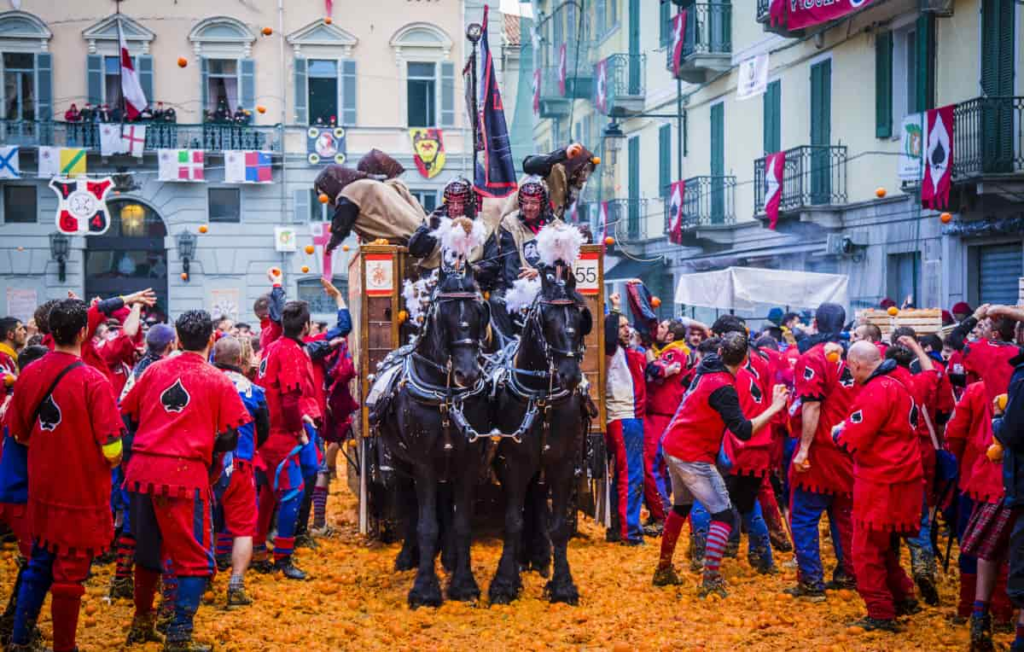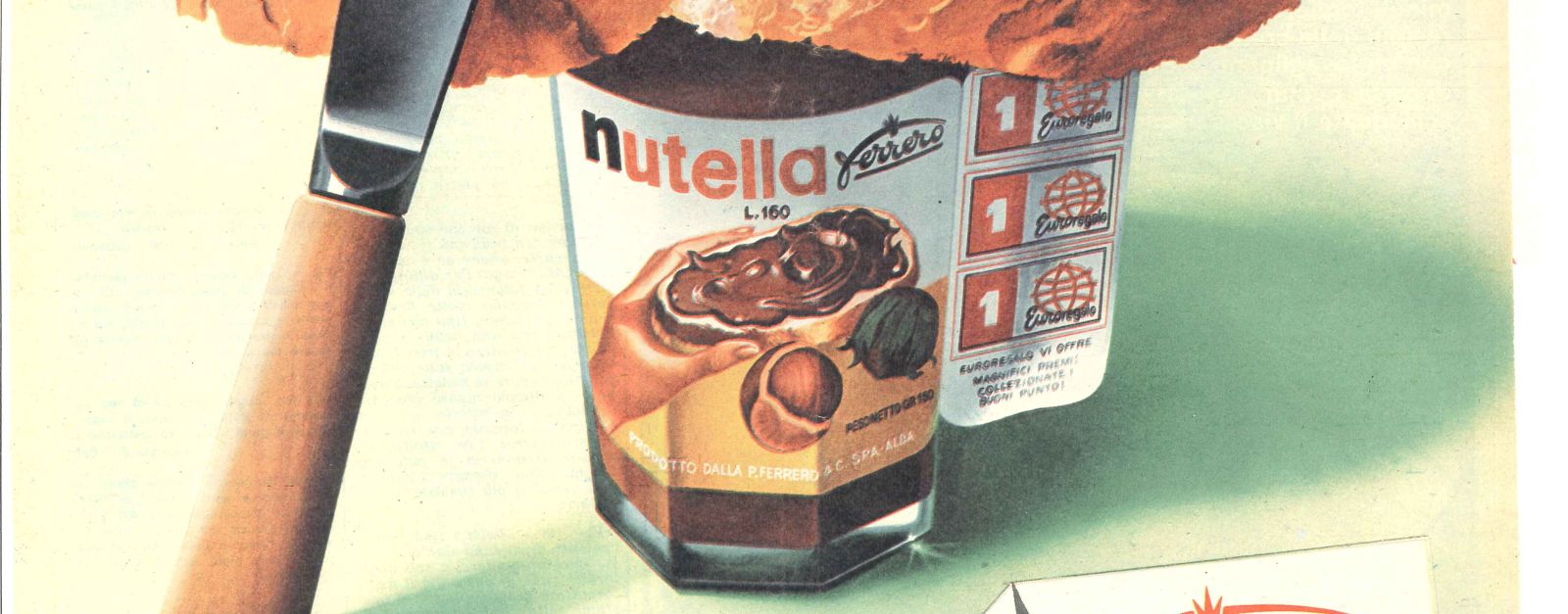The Carnival of Ivrea is one of the most important events that take place in Italy and begin on Epiphany day until Shrove Tuesday. The event fills the city with colors and scents that attract many visitors from all over Italy and even from abroad.
The Ivrea Carnival has a long history to discover, it is the oldest historical carnival in Italy. It sees the participation of different traditional characters and the most awaited moment is that of the famous and evocative battle of the oranges that takes place in the last days of Carnival.

dal web
Carnival of Ivrea: the traditional Battle of Oranges
The Carnival of Ivrea is an event among the oldest in Italy that takes place every year in this city of Piedmont to celebrate the holiday. It is an event that carries on some traditions of the Middle Ages. One of these is the famous battle of oranges that takes place on the highlights of the Carnival period.
This consists in a parade through the streets of the city in which the citizens just throw the oranges. The event follows every year a precise ceremony that takes up some of the rites handed down first orally and then later with documentary evidence until 1808 when in “The Books of the Verbal Processes” the first transcription of a ceremony is inserted.
During the days dedicated to Carnival the whole city is completely transformed and the main squares of the historic center become a real bloodless battlefield.

dal web
The celebrations of the Ivrea Carnival
The Carnival of Ivrea follows a predetermined program that opens on the day of the Epiphany when the drummers and pipes roam the streets of the village announcing the beginning of the festivities. The General’s ceremony takes place in the morning. This figure dates back to the time of the Napoleonic occupation, when the authorities decided to establish a police service to prevent violent clashes between the most fiery participants.
In the afternoon there is a religious service during which the Podestà, the highest city authority, gives the Bishop a votive candle to invoke the protection of the Madonna. The third Saturday before Carnival is dedicated to children, the Abbà who interpret the disorder, rebirth and continuity with the past.
The following day there are a series of ceremonies that first determines the taking charge of the Book of Minutes in which every year are recorded all the facts concerning the Carnival. Then the flag is handed over to the bishop and there is the public reading of the opening minutes.
One of the other ceremonies concerns the presentation of the Abbà to the citizens. The penultimate Sunday of Carnival instead concerns the event that celebrates peace between two neighborhoods of the city, that of San Maurizio and that of Borghetto. During the afternoon of Fat Thursday the mayor of Ivrea gives his band to the General for the duration of the celebrations.
The main phase of the Carnival can thus begin with the proclamation of the ordinance by the General that obliges all participants to wear the Phrygian cap that is a symbol of brotherhood and freedom. On Saturday it is dedicated to the protagonist of Carnival.
This is the Vezzosa Mugnaia Violetta that is chosen among the brides of the previous year and is then presented to the citizens. This figure, introduced in the Risorgimento, dates back to the Middle Ages and according to tradition it was she who killed the tyrant and to stop the barbaric custom of ius prime noctis.

dal web
Carnival of Ivrea the history and the main characters of the historical parade
The historical parade of the Carnival of Ivrea is populated by several characters from different eras. The first to appear are the Abbà who are ten children two for each of the five districts of the city, chosen to announce the beginning of the celebrations.
Their costumes are in Renaissance style and reflect the colors of the districts to which the children belong. Another key figure of the Carnival of Ivrea is the General who is presented to citizens on the day of the Epiphany. This character was introduced in the Napoleonic period and preserves the integrity of the Carnival ensuring public order.
Without a doubt, the real protagonist of the Ivrea Carnival is the Miller. According to legend, this girl was the daughter of a miller and the wife of Toniolo who killed the lord of the city and began the popular revolt. The character was first introduced in 1858. The girl accompanied by the General, his escort and other characters of the parade leads the parade through the streets of the city of Piedmont.

dal web
The battle of oranges of the Carnival of Ivrea
The battle of oranges is the main and most spectacular event of the Carnival of Ivrea. His intention is to represent the revolt of the people against the tyrant. For three afternoons the teams of orangers on foot fight with those on the wagons in the city streets.
The wagons are divided into two different types: those with four horses and those with two that alternate for a few minutes inside the squares. In addition, a Creative Observatory evaluates which of these is the winner of the event. From Fat Thursday the obligation for all participants to wear the Phrygian cap. Those who do not wear it during the days and areas of the battle can be hit by the Aranceri.
Copertina: dal web




